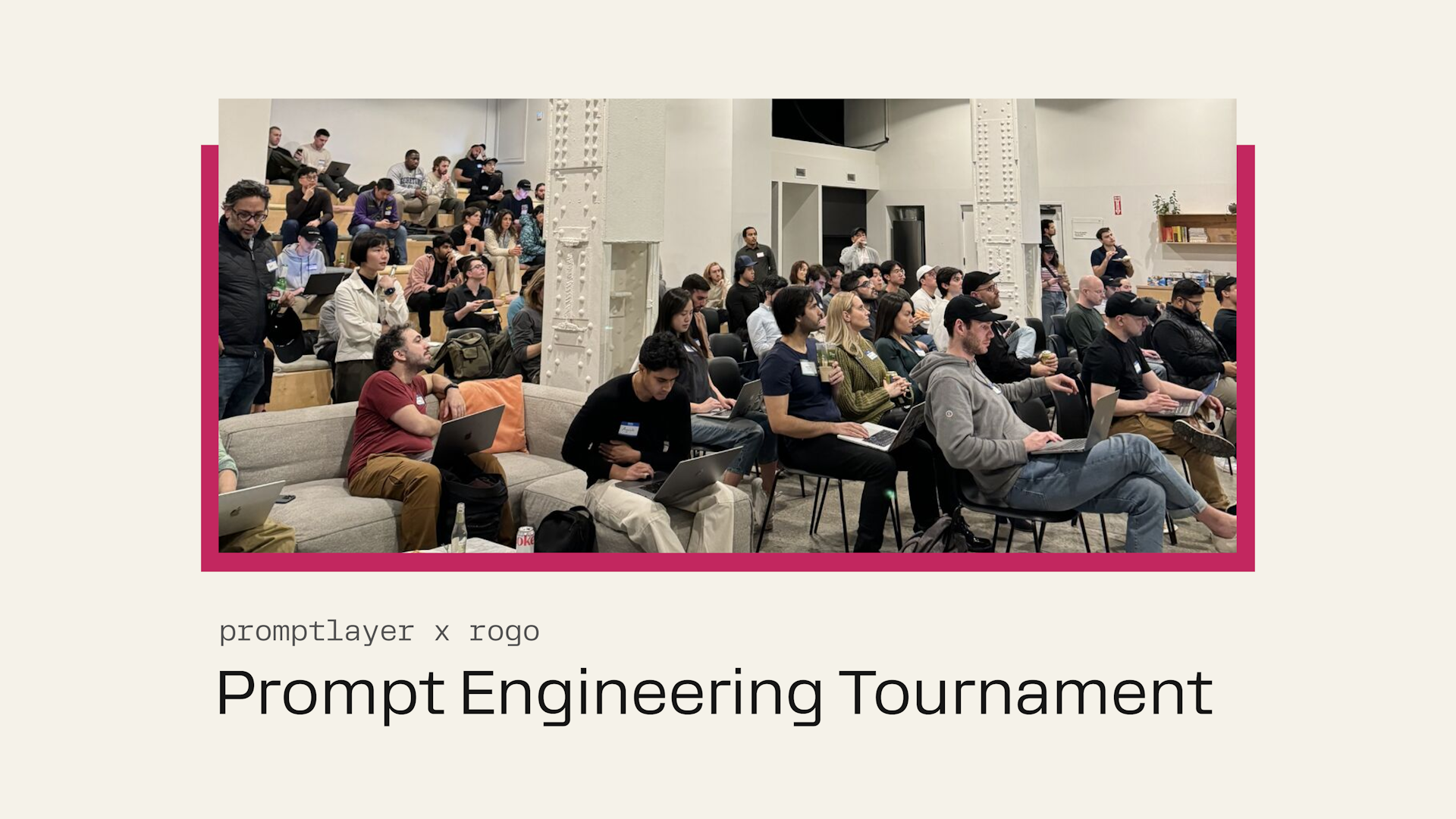Prompt Engineering: Tournament Overview and Key Tips

Last week, Rogo had the opportunity to co-sponsor PromptLayer’s first Prompt Engineering Tournament, alongside Company Ventures, Rabbit, and Basis.
The event consisted of a 3-round tournament to find the best prompt engineer in NYC! Participants were asked to come up with prompts to achieve varied purposes: avoiding a PR crisis, doing some homework, and giving financial advice. Each prompt was assessed with an evaluation system and given a score to select a winner! Read more about the event here.
Even if not everyone can match the tournament champions’ prompting prowess, several basic tips can enhance anyone’s prompting skills, which we’ve compiled below.
What is Prompt Engineering?
Prompt engineering is the process of crafting inputs (prompts) in a way that guides an AI to generate the desired outputs or responses.
Basic Prompt Engineering Tips:
Be specific: It’s important that prompts precisely convey the intended request or question. Vague or overly broad prompts can lead to ambiguous or irrelevant responses.
Include context: It always helps to provide relevant background information and details before diving into your main request. This “contextual priming” can help the AI understand the context that would make the answer most useful and applicable to your needs, especially when dealing with complex or niche subjects.
Linked Prompting: For more complex inquiries or tasks, consider using a series of linked prompts. Start with a foundational prompt and use the response to build subsequent, more detailed prompts. This approach, often referred to as “chain prompting,” can help guide the AI through a logical progression of thought or analysis, leading to more comprehensive and nuanced outputs.
Define any ambiguous terms: In cases where a term or concept might be ambiguous, add in clarifying details to ensure the AI understands the intended meaning.
Leverage RAG (Retrieval-Augmented Generation) systems: If you know that an AI tool is retrieving sources to find the answer to your query, help the system out by giving hints about what information would make sense to go out and find, like expected data sources and applicable filters.
Indicate format: If you’re looking for a specific format or structure for the response (e.g., a list, a summary, a table, etc.), include that in your prompt.
Utilize markdown: Markdown, a lightweight markup language with plain-text formatting syntax, can be a powerful tool for instructing AI tools to organize responses in line with certain formatting expectations. For example, you can use bullet points, headers, or numbered lists in your prompt, and the model can then mirror this formatting.
Iterate: Use your first prompt and the response to make improvements! Often, prompt engineering involves an iterative process, and initial responses can help you refine and adjust subsequent prompts for better outcomes.
Utilize Meta Prompting: Engage in a dialogue with the AI about the prompt itself. Ask the AI to critique or suggest improvements to your prompt. This meta approach can uncover insights and optimizations that you might not have considered, leading to more effective prompting strategies.
If you’re interested in learning more about how Rogo’s AI solutions could help your firm, we’d love to chat. We’re also hiring – see our open roles and get in touch.